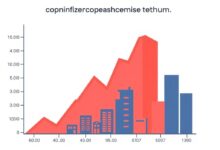What are target-date funds and how do they work?

For those seeking a streamlined approach to retirement savings, automatic allocation strategies offer a compelling solution. These investment vehicles adjust asset distribution over time, aligning with an investor’s anticipated retirement date. This method simplifies portfolio management by automatically shifting from higher-risk assets to more stable investments as the target date approaches.
The time-based strategy employed in these financial products is designed to mitigate risk while optimizing growth potential. Initially, funds are heavily weighted in equities, providing robust growth opportunities during the investor’s younger years. As the timeline narrows, allocations gradually transition toward fixed-income securities, protecting accumulated wealth against market volatility.
Investors can benefit significantly from this hands-off approach. By leveraging automatic adjustments and adhering to a pre-defined timeline, individuals can stay focused on their long-term goals without the need for constant monitoring or rebalancing of their portfolios.
How to Choose a Fund
Selecting the right investment option requires careful evaluation of several factors:
- Retirement Date: Identify your target retirement year. This will guide you in selecting an appropriate time-based strategy that aligns with your financial goals.
- Risk Tolerance: Assess your comfort level with market fluctuations. Consider how much risk you can handle before making decisions about asset allocation.
- Investment Expenses: Review the fees associated with various choices. Lower costs can significantly impact long-term performance.
- Performance History: Investigate past returns, but remember they do not guarantee future results. Analyze how well the portfolio has performed compared to benchmarks.
- Diversification: Ensure that the investment mix includes a variety of asset classes. A well-diversified portfolio can help mitigate risks over time.
- Manager Reputation: Look into the firm’s track record and management team expertise. Experienced managers are likely better equipped for sound decision-making.
Your selection should balance growth potential with stability as you approach retirement planning milestones. Regularly revisit your choice to ensure it remains aligned with changing personal circumstances and market conditions.
Investment Strategy Overview
A time-based strategy is pivotal in retirement planning, as it aligns investment allocations with the anticipated retirement date. Start by determining your target retirement age, then select a portfolio that gradually shifts from higher-risk assets to more stable options as that date approaches.
Prioritize diversification across various asset classes to mitigate risk. Typically, younger investors can afford to hold a larger portion of equities for growth potential, while those nearing retirement should increase their allocation in fixed-income securities and cash equivalents.
Regularly review and adjust your holdings to reflect changes in market conditions and personal circumstances. Utilize automatic rebalancing features if available, ensuring your portfolio maintains its intended risk profile without requiring constant oversight.
Consider the impact of inflation on purchasing power over time. Strategies that incorporate inflation-protected securities can provide an additional layer of security against rising costs during retirement years.
Lastly, be aware of fee structures associated with different investment options. Lower fees can significantly enhance long-term returns, making it crucial to assess costs when choosing your investment vehicles.
Risk Management Techniques
Implement automatic allocation strategies that adjust asset distribution as retirement approaches to mitigate risk. This ensures a gradual shift from higher-risk investments to safer, income-generating options over time.
Utilize diversification across different asset classes, such as equities, bonds, and alternative investments. This reduces exposure to any single market downturn and enhances overall portfolio stability.
Incorporate glide paths within the investment structure. These predefined strategies dictate how the asset mix evolves, aligning with an individual’s timeline and risk tolerance.
Regularly review performance metrics against benchmarks to identify deviations and necessary adjustments. This proactive approach helps maintain alignment with long-term goals while managing volatility.
Consider employing low-volatility funds or bonds during market uncertainty periods. Allocating a portion of the portfolio towards these instruments can stabilize returns and protect capital leading up to retirement.
Lastly, maintain liquidity in your investment strategy. Ensure enough cash reserves are available for unexpected expenses without compromising long-term growth potential.
Fees and Expenses Explained
Assessing costs associated with investment vehicles is paramount for retirement planning. A transparent fee structure can significantly influence overall returns. Look for management fees, which are typically expressed as a percentage of assets under management. These fees can range from 0.5% to 1.5%, depending on the complexity and service level provided by the investment manager.
Expense ratios include operational costs such as administrative expenses, marketing, and distribution fees. It’s crucial to compare these ratios across similar products; lower expense ratios often correlate with higher net returns over time.
Additionally, some options may impose sales loads or redemption fees, which can further erode your investment gains. Opt for no-load alternatives whenever possible to maximize your capital growth.
Automatic allocation strategies should also factor in expense considerations. While these strategies simplify rebalancing, ensure that the underlying investments remain cost-effective to maintain a healthy portfolio performance throughout your investment horizon.
A comprehensive understanding of all applicable fees allows investors to make informed choices that align with their long-term financial goals. Regularly reviewing expenses ensures that you stay on track with your retirement objectives while optimizing returns.
Performance Monitoring Tips
Regularly review your portfolio’s performance against benchmarks relevant to your retirement timeline. Set specific intervals–quarterly or semi-annually–to analyze growth and asset allocation shifts.
Utilize online tools or apps to track automatic allocation adjustments made by the fund manager. These platforms often provide insights into how well the investment strategy aligns with your retirement goals.
Compare the fund’s historical returns with similar options in the market. This can reveal whether it consistently meets or exceeds expectations relative to peers, ensuring you’re on track for effective retirement planning.
Stay informed about economic indicators that might affect market performance. Interest rate changes, inflation rates, and unemployment figures can all influence fund strategies and long-term returns.
Engage with customer service representatives from your investment firm if questions arise about fund decisions or strategies. Their insights can clarify operational changes affecting your investments.
Consider setting alerts for significant market movements or news related to your investments. Being proactive helps in making timely adjustments if necessary.
If you find discrepancies between expected and actual performance, reassess your risk tolerance and retirement timeline. Adjustments may be needed to ensure alignment with personal financial objectives.







